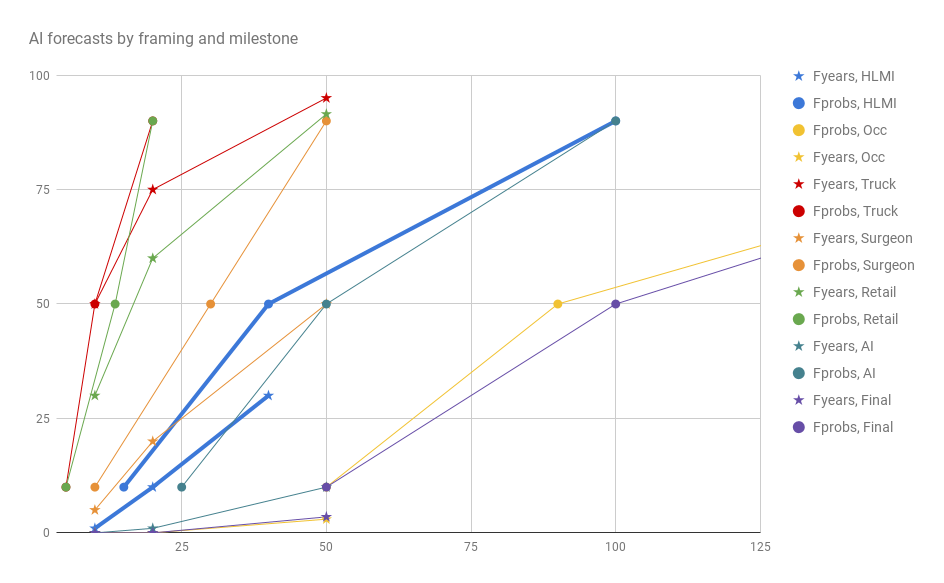Chance date bias
Published 11 December, 2017; last updated 10 December, 2020
There is modest evidence that people consistently forecast events later when asked the probability that the event occurs by a certain year, rather than the year in which a certain probability of the event will have accrued.
Details
In the 2016 ESPAI and its preparation, AI experts and Mechanical Turk workers both consistently gave later probability distributions for events relating to AI when asked to give the probability that the event would occur by a given year, rather than the year by which there was a certain probability. See more on the ESPAI page.
We do not know which framing produces more reliable answers. We have not seen this bias elsewhere.
The following figure shows an example for some key figures: the distributions with stars are consistently a little flatter than those with circles.


